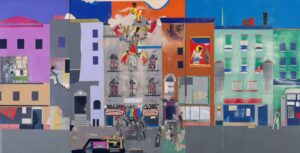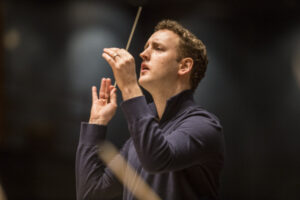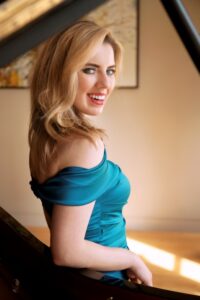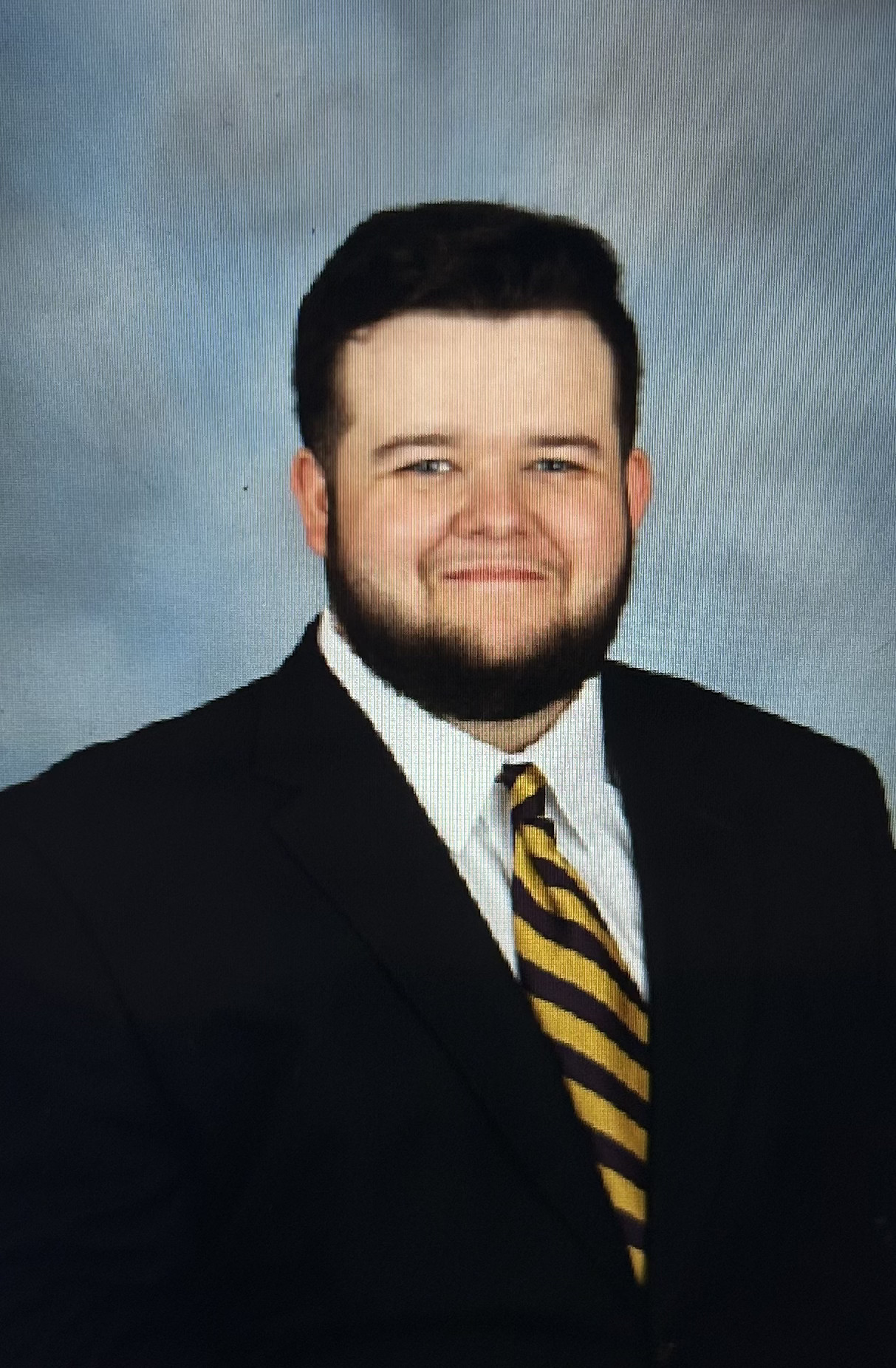In the Schermerhorn's Turner Hall:
Paremski was sublime as Francis Danced the NSO around the Block
The most recent addition to the Nashville Symphony’s classical series was not one to be missed. The program featured a diverse collection of music including Carlos Simon’s The Block, Antonin Dvořák’s Slavonic Dances Op. 72, and the headlining Rachmaninoff’s Second Piano Concerto featuring Natasha Paremski on piano. The concert was fantastically conducted by Guest Michael Francis.

The youngest and shortest of the pieces was of course The Block. Carlos Simon is one of the leading modern composers and is currently in residence with the Boston Symphony. Simon draws a lot of influence from African American history and The Block is no exception. This specific piece is influenced heavily by six different Harlem Renaissance paintings by Romare Bearden depicting different buildings in Harlem. The piece features percussion heavily adding several instruments beyond the traditional symphony orchestra including drum set and vibraphone. There is also a heavy jazz and blues influence heard in the melodic lines and in the syncopation carried throughout the piece. My favorite lines were always played by the trumpets, they sounded in more of a big band style rather than the traditional symphonic style. The piece almost never loses its driving energy as the woodwinds and strings meander through scalar passages. The only time it does is a welcome change in dynamics during several passages in the middle of the piece. I was very pleased with the piece; I found myself very engaged even to the point that I was shocked it ended so quickly. Perhaps that’s simply due to expecting the longer pieces to come after.
Following Simon’s piece was the classic second set of Dvořák’s Slavonic Dances. Composed in 1886, eight years after composing the first set, the new set brings eight new dances to the collection. All taking root in the Slavic regions and having their own unique tones and settings. Conductor Francis spoke on the piece connecting it to The Block as they are both celebrations of a specific culture. However, he did note that the dances serve as a farewell to old tradition in a world that was growing smaller and smaller by the day. Each movement has its own specific dance: the first, an Odzemek which is a traditional dance for men containing a lot of improvisation. The second and fourth are Ukrainian Dumky and are much slower, solemn and melancholy to the rest. Dvořák did this intentionally reflecting on the pressure from outside forces Ukraine was facing at the time. Francis commented that the unfortunate irony is that if these were written today the dumka might take a similar tone. The third movement is a Skočná which is faster and related to the circus groups of the area, this is reflected in the jumping and fast melodies within the piece.
The fifth movement is a Špacírka which is of bohemian descent and literally translates to “walk around”. This movement features several sections of varying tempo and dynamic and feels like it’s constantly shifting before a dramatic half-time statement towards the end of the movement. The sixth is a Starodávný which is from Dvořák’s hometown and is in three which is different from the previous movements. The seventh is a Kolo which is a Serbian circle dance where dancers would link and perform it together. This movement is fast and sounds very much like a finale to the entire piece. Francis commented that, though it sounds like a finale, it is not and the final movement feels more like a farewell to the ending age as time progressed towards the 20th century. The final movement is a Sousedeská that feels reminiscent of the past with its slower and flowing melodies. The Slavonic Dances were heavily influenced by Brahms’ Hungarian Dances but differed in that all of Dvořák’s melodies were completely original and just based on the form and rhythms of the regions the dances hailed from. The Nashville Symphony expertly maneuvered through each movement with caution and care. There was total conviction behind the playing, especially in the slower movements. Even in the more technical parts such as the seventh movement, a captivating feeling was expressed from the stage to the audience. Closing your eyes you were instantly transported to the Slavic regions in the late 19th century.

The final and headlining selection was, of course, Rachmaninoff’s Second Piano Concerto in C minor. The concerto was his first completed work following the disastrous premier of his first symphony. Rachmaninoff struggled with depression in the following years following the symphony’s premier and it stunted his compositional practices. He sought help from neurologist and musician Nikolai Dahl who helped him work through these issues and led him towards composing again starting in 1900. Over the next year Rachmaninoff spent his time composing the concerto and finally in November of 1901. The first movement begins with a bell-like statement of eight chromatically related chords over a very low pedal on F. Following the themes are stated in the strings while the piano takes an accompanying role with arpeggios spanning the keyboard. This relationship is standard in the first movement with exceptions in small virtuosic piu mosso sections that act to separate statements of the themes.

I found it was difficult to hear the piano at times during the first movement. I’m unsure if this was due to the nature of the movement with loud statements in the strings or if it was due to the piano being in a very low register. Regardless of the reason I was happy that this issue did not persist throughout the other two movements. The second movement fulfills the role as the expected slower movement of the three. The movement begins by quickly modulating to E major from C minor with chord statements from the piano before the flute takes over the primary theme. The theme is taken by the clarinet during a solo and is then passed throughout the orchestra until landing in the piano progressing to a pseudo B section. Following a large cadenza for the piano we return the restatements that draw this movement to an end.
The flowing lyricism throughout the entire orchestra and Natasha Paremski on piano was near sublime throughout the ending of this movement. The final climax between piano and strings nearly pushed me to tears. This movement feels like a true testament of Rachmaninoff working through his previous depression into a new light and world where he can continue his passionate work.
The final movement is more agitated than the previous two and quickly modulates back to C minor in the beginning. Much faster than the other two there is a new energy in the thematic statements that drives the movement forward. As the movement progresses to the development the key center for the themes changes almost sporadically but stays near C. The development carries an improvisational tone and feel throughout the entire section. Finally, the recapitulation moves to C Major with truncated statements of the original themes. The piece ends on a triumphant four chord statement that would be reused in his third concerto as well.
To me, this ending is Rachmaninoff finally saying he has fully overcome his depression and is ready to progress his music further. This third movement filled the Schermerhorn with an electrifying sound. Despite the issues of hearing the piano in the first movement there wasn’t any of that in the loud third movement. Whether this was an intentional change from Conductor Francis or due to the musical prowess of orchestra members it was a much appreciated and needed change. The Symphony showed their lasting ability and prowess that has kept them top of the line for decades.
Overall, the concert was an absolute joy to attend and I’m looking forward to the next I get to be a part of. The orchestra was ever aware of the meaning and concinnity behind the music and used their personal expression to give all of it to the audience. This showed especially in playing two pieces from similar times and similar areas of the world but easily established and exaggerated the differences between compositional styles and techniques. Michael Francis was extremely knowledgeable on the music and expertly led the orchestra. Natasha Paremski was beautifully artistic and virtuosic throughout the entire concerto, expressing the minute details of Rachmaninoff’s battle with mental health. The concert was truly a pleasure to attend. Bravo!



